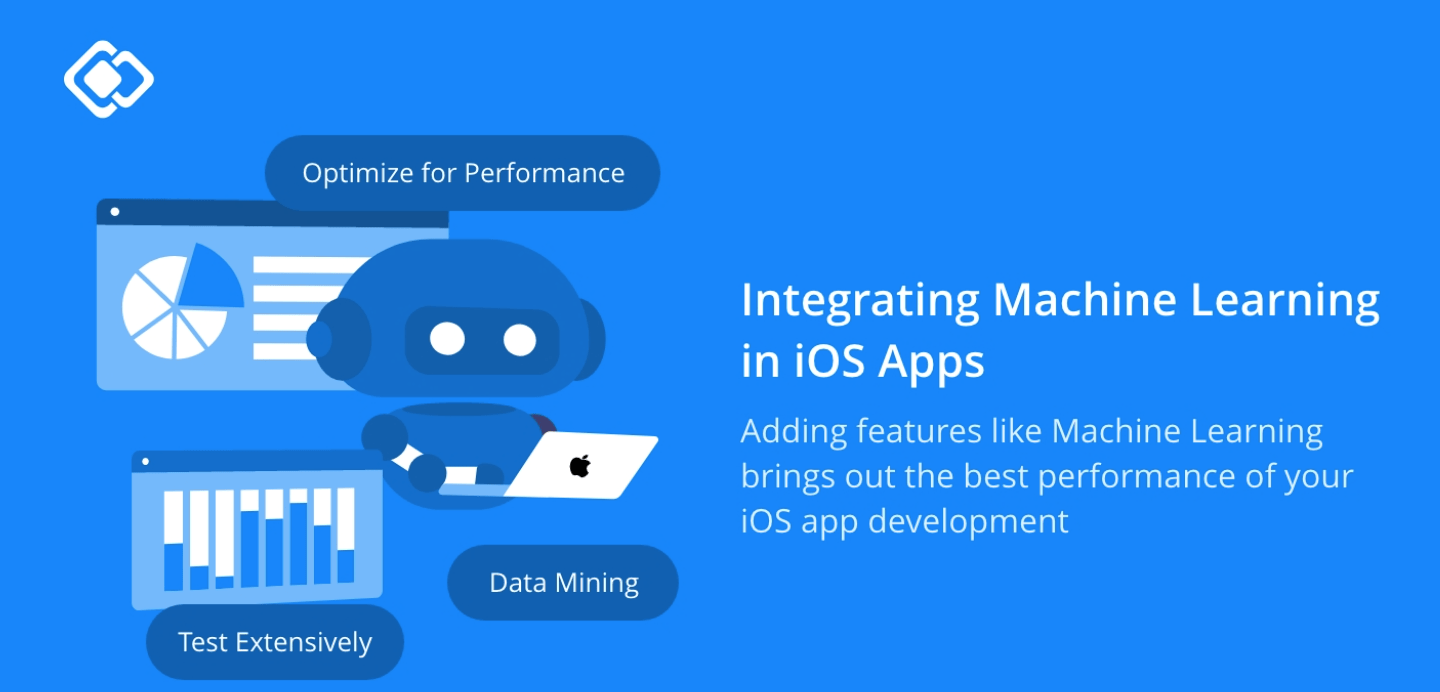Integrating CoreML into Your App: A Step-by-Step Guide
Have you looked into the recent trends that every other brand is opting for? Yes, you got it right. It is a well-known machine learning technology.
So, let’s go with the trendy tech of machine learning because it is getting quite popular in the market.
A graphical representation from Grand View Research shows the global market size of machine learning was valued at $36.73 billion in 2022. They have also looked at how this industry will just grow year by year with an annual rate of 34.8% from 2023 to 2030.
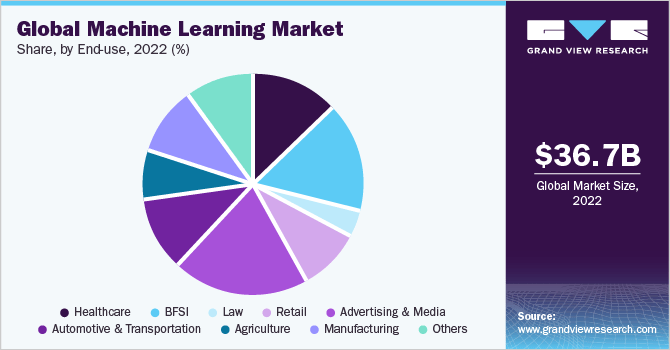
Out of all the largest market size will be the United States with a value of $21.14 billion in 2024. (Source: Statista)
As USA users have a larger number of iOS users, integrating Machine Learning into iOS apps can transform user experiences, making them smarter, faster, and more personalized. Apple’s CoreML framework simplifies this process.
CoreML allows developers to seamlessly incorporate pre-trained machine-learning models into their iOS apps. Whether you are looking to enhance security, improve search functionality, or predict user behavior, CoreML has got you covered.
In this blog, you will learn about the whole process of integrating machine learning in iOS. It will help you understand how you can optimize performance and ensure data privacy.
Let’s dive in and see what exactly CoreML is and its process to integrate into your iOS app development.
What is CoreML?
CoreML does not allow you to create and train machine learning models directly on an iPhone. Instead, it’s a framework that lets you import pre-trained models into your app easily. You just drag and drop the models into your project, they are optimized to be fast, secure, and power-efficient. Essentially, you are using a pre-made “black box” that you can send data into and get predictions out of.
One of the best things about CodeML is that Xcode handles most of the setup for you when you import a model. It automatically generates Swift classes, making it easy to use your model in your code with a simple line like: ‘let model = sentiment_model ()’. We’ll look at a detailed example later, but basically, Xcode gives you a ready-to-use programmatic interface for your pre-trained model.
However, there is a catch, the interface’s quality depends on how well the model is defined. When a CoreML model is created, Xcode generates metadata describing its inputs, outputs, and functionality. If the model’s creator didn’t specify this metadata clearly, you’ll need to do some extra work to format the inputs correctly and understand how the model works internally.
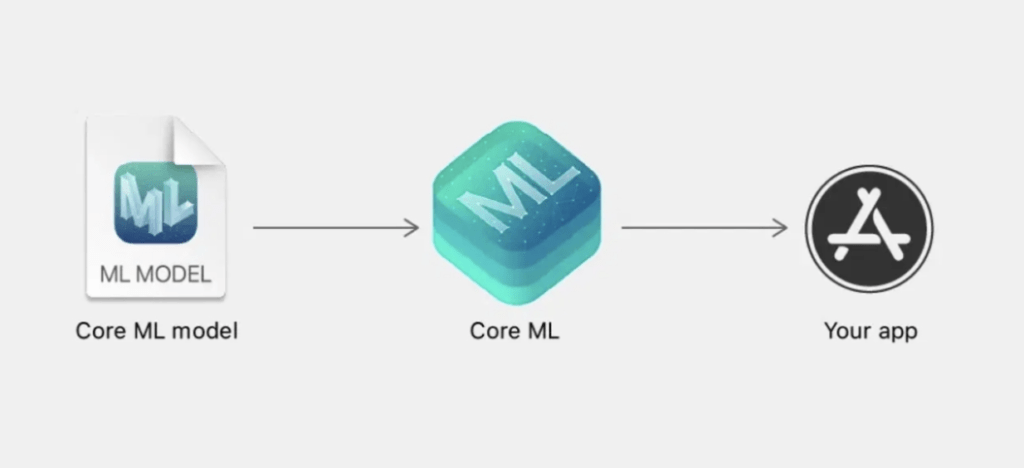
Let’s go through this process in the next section.
Step By Step Process of Integrating CodeML into Your App
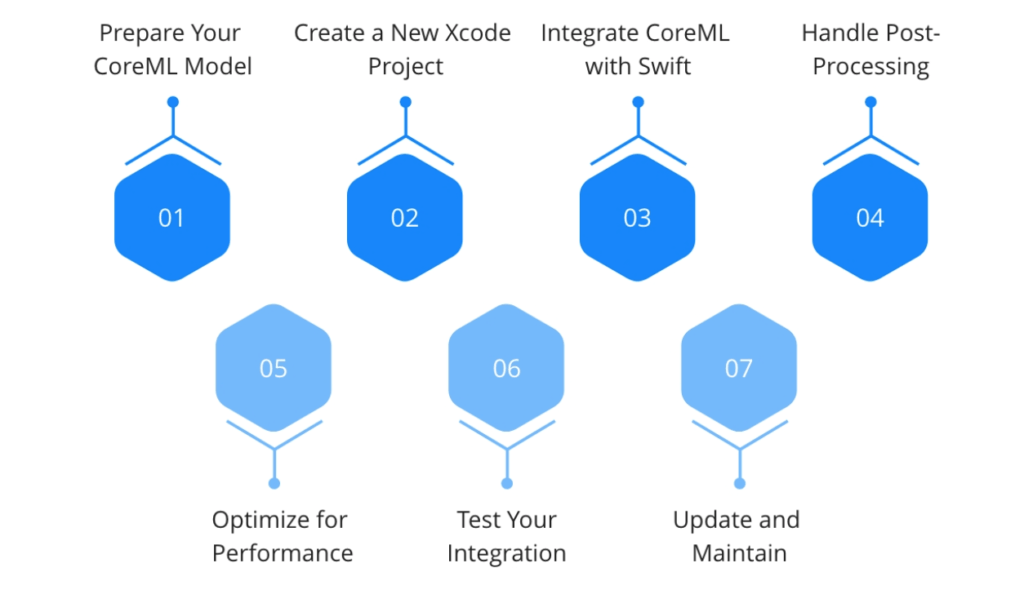
Step 1: Prepare Your CoreML Model
Before you start with Xcode, make sure your CoreML model (lstm_model.mlb package file) is ready.
Step 2: Create a New Xcode Project
In this step, use Xcode 15.1 to create a simple iOS and incorporate the CoreML model. Follow these steps to create your basic app:
- Open Xcode and Create a New Project:
- Open Xcode and select the option to create a new project.
- Choose the template for an iOS app.
- Set up your project:
- Give your project a name and an organization identifier. You can choose any name you like or follow the example given.
- Make sure to set the interface to SwiftUI and the language to Swift.
- Open your project:
- After creating your project, open the newly created .xcodeproj file. You should see a folder structure similar to this.
Step 3: Integrate CoreML with Swift
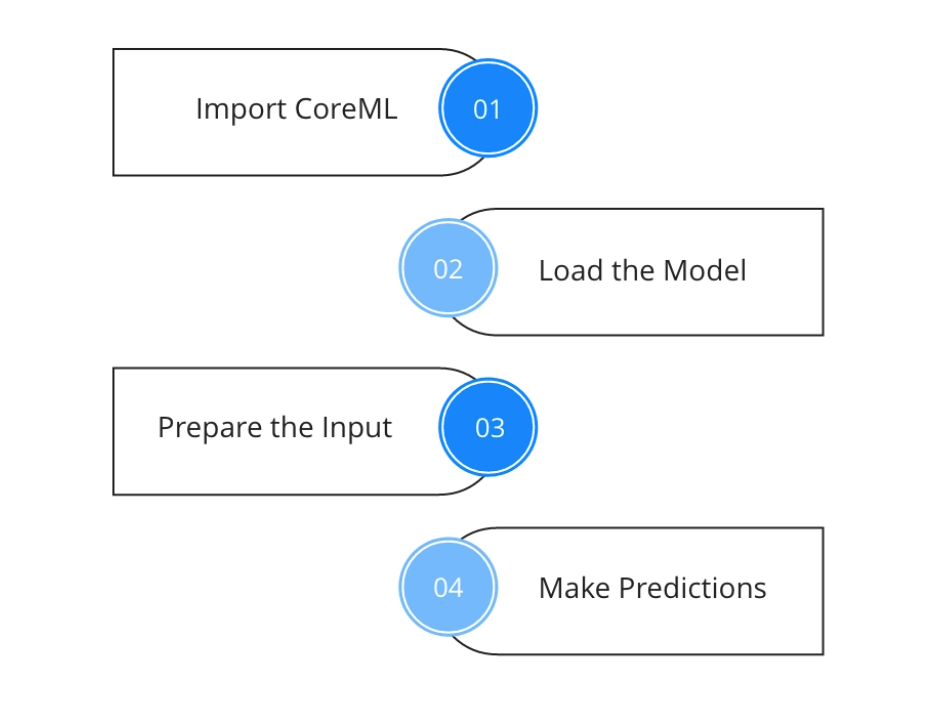
- Import CoreML: In your ViewController or wherever you plan to use the model, import the CoreML framework.
import CoreML- Load the Model: Create an instance of the model class.
let model = YourModelName(data: yourInputData)- Prepare the Input: Ensure your input data matches the model’s required input format. This might involve preprocessing steps such as resizing images, normalizing data, etc.
let input = YourModelNameInput(data: yourInputData)
- Make Predictions: Use the model to make predictions.
do {
let prediction = try model.prediction(input: input)
// Use the prediction result
} catch {
print("Error making prediction: \(error)")
}Step 4: Handle Post-Processing
Process the Output: Depending on your model, you may need to post-process the output to make it usable for your application. This might involve deciding results, applying thresholds, etc.
Step 5: Optimize for Performance
Model Optimization: Ensure your mobile is optimized for on-device performance. Use techniques like quantization or model pruning if necessary.
Use Background Threads: Perform model predictions on a background thread to avoid blocking the main thread and keep your mobile design UI responsive.
Step 6: Test Your Integration
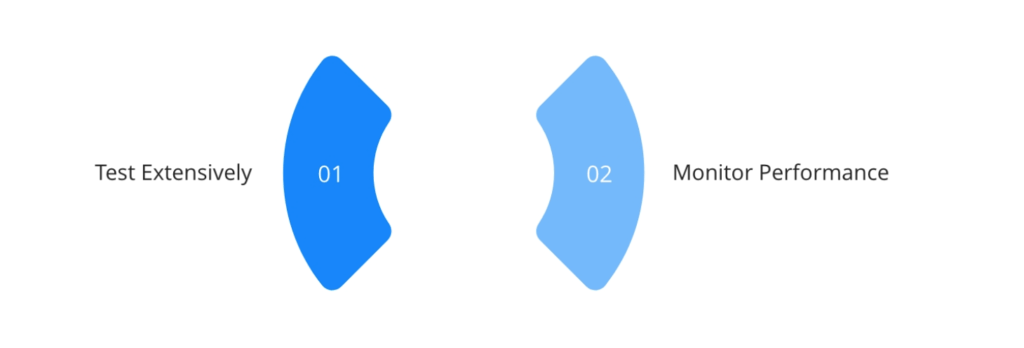
Test Extensively: Run extensive tests on various devices to ensure the model performs well across different scenarios and device capabilities.
Monitor Performance: Use Instruments and other profiling tools to monitor memory and CPU usage, ensuring the model’s inference does not degrade app performance.
Step 7: Update and Maintain
Regular Updates: Keep your model updated as you gather more data or improve the model’s accuracy.
User Feedback: Incorporate user feedback to continuously improve the model and its integration within the app.
Real-World Examples of Machine Learning in Mobile Apps
Here are some top mobile apps that effectively use machine learning
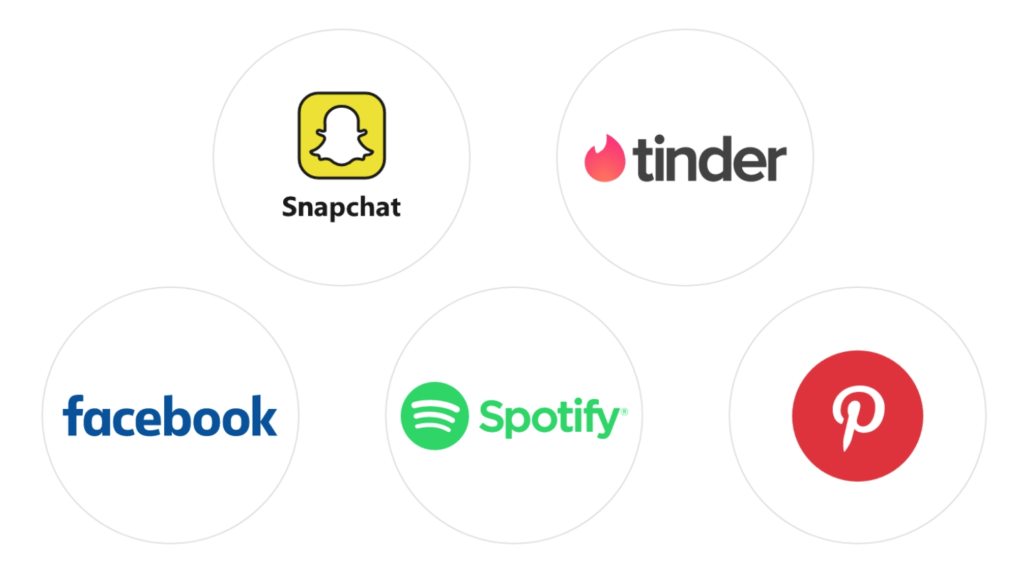
Snapchat
Snapchat uses supervised machine learning, particularly in computer vision. This technology helps the app recognize faces in photos and add fun elements like glasses, hats, and dog ears.
Tinder
Tinder improves its “Smart Photos” feature using a reinforcement learning algorithm. This algorithm displays user photos to others in a random order and then analyzes how many right and left swipes each photo gets. This way, Tinder can determine which photos are most appealing and rearrange them to show the most popular ones first.
Spotify
Spotify employs three machine learning algorithms to provide personalized music recommendations in the “Discover Weekly” section:
- Collaborative Filtering: Looks at user-generated playlists and listens to tracks to suggest songs from similar playlists.
- Natural Language Processing: Analyze song lyrics, blog posts, discussions, and new articles to recommend music with similar themes.
- Audio Model: Examines the raw audio data to tracks to categorize songs and suggest ones with similar characteristics.
Facebook integrates machine learning across its platform, including in the “People You May Know” section. Here, it analyzes user profiles, interests, current friends, and their connections to suggest potential new friends.
Pinterest uses machine learning in various aspects of its platform, even if users may not realize it. This technology helps Pinterest suggest relevant pictures, manage spam, discover new content, and enhance advertising. Machine learning is integral to improving user experience and maintaining the platform’s quality.
These examples show how machine learning can enhance user experience, improve personalization, and make apps smarter and more engaging.
Benefits of Incorporating Machine Learning in Mobile Apps
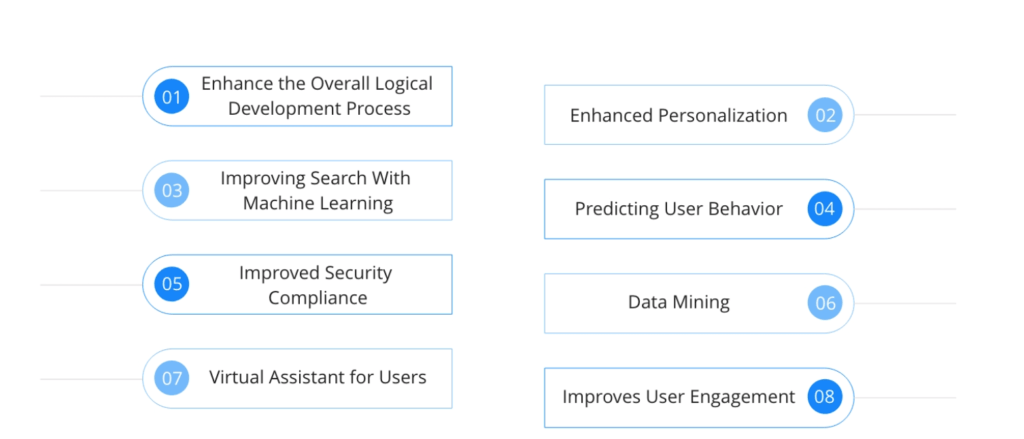
Enhance the Overall Logical Development Process
Mobile app developers often feel overwhelmed by the need to account for every possible user input, which can make the development process time-consuming and delay the launch of the app.
Machine learning can simplify this by helping developers understand various coding patterns and trends. By incorporating machine learning app development, developers can enhance their overall logic and coding skills, making the process more efficient and reducing the time it takes to bring the app to market.
Enhanced Personalization
Machine learning in iOS can analyze data from users’ activity on apps and social media to help businesses understand and categorize their customers. By gathering this information, businesses can learn about their customers’ interests, how they use the product, and what they prefer.
This data can be used to improve content, tailor it to specific user groups, and offer a personalized experience for each customer. This way, businesses can better engage with their audience and meet their individual needs.
Improving Search With Machine Learning
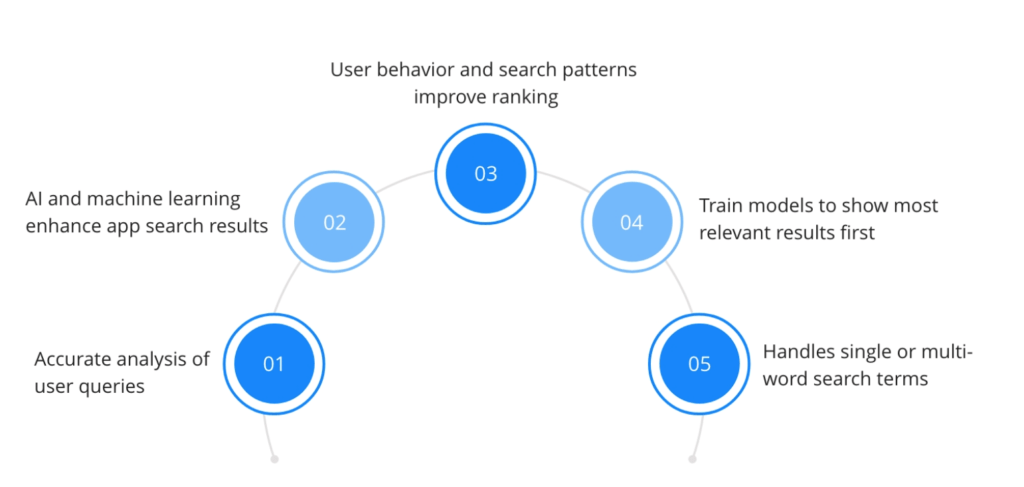
Mobile apps can enhance search results using AI and machine learning in iOS by accurately analyzing user queries. Developers can train these models to show the most relevant results first, whether the search term is a single word or multiple words, making it easier for users to find what they need.
Modern mobile apps can also collect user data, such as search history and common actions. This data, combined with behavior and search patterns, helps businesses rank their products or services better and show the best results.
With machine learning in iOS tools in your app, businesses can improve search capabilities, provide more relevant results, offer a better user experience, and reduce the time users spend searching.
Predicting User Behavior
Marketing apps using machine learning in iOS can give marketers deep insights into customer preferences and behavior by analyzing data like age, gender, location, search histories, and how often they use the app. By integrating in-app architecture, NLP, and machine learning algorithms. These apps can observe user behavior and adjust their features accordingly.
Businesses can use a predictive analytics engine powered by machine learning to make accurate predictions based on users’ part behavior and current needs, providing a quick and clear understanding of what users want.
Improved Security Compliance
Machine learning in iOS can improve app security and streamline authentication. With video, audio, and voice recognition, users can authenticate themselves using biometrics like face or fingerprint. Machine learning also helps businesses manage user access rights.
Machine learning algorithms can help detect and immediately block suspicious activities, which provides fast and secure logins. It also helps in reducing the need for constant monitoring. These algorithms can also protect customers in real-time from previously unknown malware threats.
Through machine learning in iOS, many businesses have gained the authority to detect fraudulent behavior. All these activities can be done through facial recognition technology and identify users attempting to use stolen credit cards. Additionally, banks and the financial industry use machine learning to review past transactions, social media activities, and borrowing histories to determine credit ratings.
Data Mining
Data mining involves analyzing large amounts of raw data from various sources to gather and categorize useful information, which is then stored in data warehouses.
Machine learning in iOS takes on the algorithm that can process multiple profiles at once to develop effective strategies for apps. These algorithms automatically improve over time with experience.
Virtual Assistant for Users
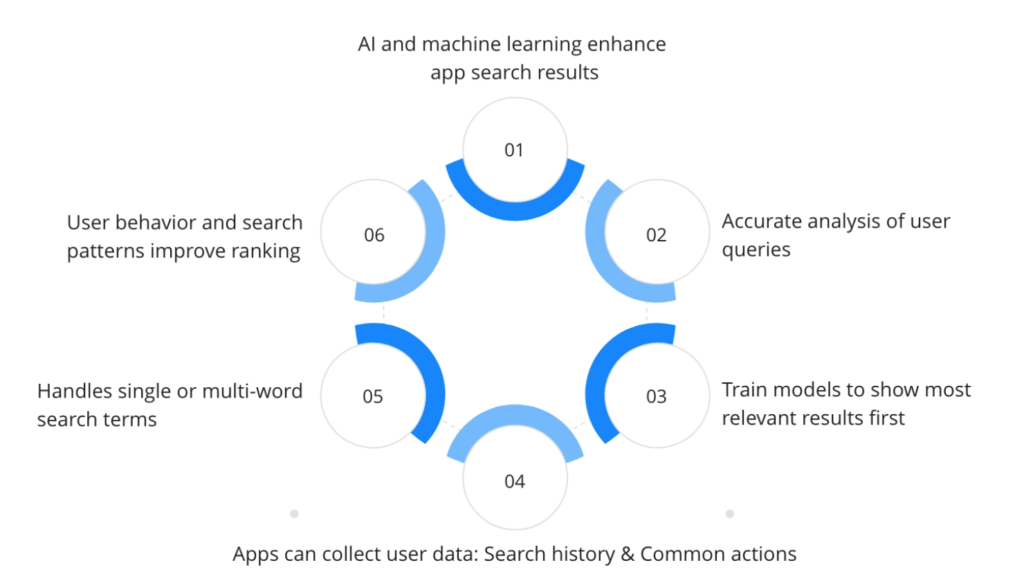
Machine learning allows businesses to create virtual assistants in their mobile apps that understand user needs. Integrating machine learning in iOS as virtual assistants can automate customer support, handle routine tasks, and boost the brand’s reputation. These assistants help users remember, organize, manage, and complete tasks, enhancing productivity.
Improves User Engagement
Businesses can use machine learning tools to provide reliable customer service, attractive features, and entertaining content. This keeps the users engaged and encourages them to use the app more frequently.
Conclusion
Machine learning is revolutionizing the way we interact with mobile apps, and CoreML makes it easier than ever to harness this powerful technology. By integrating CoreML into your iOS app, you can offer users more intelligence and performance.
We have covered everything from the basics of CoreML to real-world examples and future trends, giving you a comprehensive understanding of how to integrate this framework effectively. Now it is your turn to implement these insights and watch your app transform into a smarter, more engaging tool for your users.
Partnering with a top-tier Swift app development company guarantees expertly crafted, efficient applications that leverage the latest iOS technologies for optimal performance and user engagement.
For these, you can partner with a well-known and professional mobile app development company and oDesk Software Co., Ltd is your one stop. We are here to help you in integrating machine learning into your app.
Source: techaheadcorp







